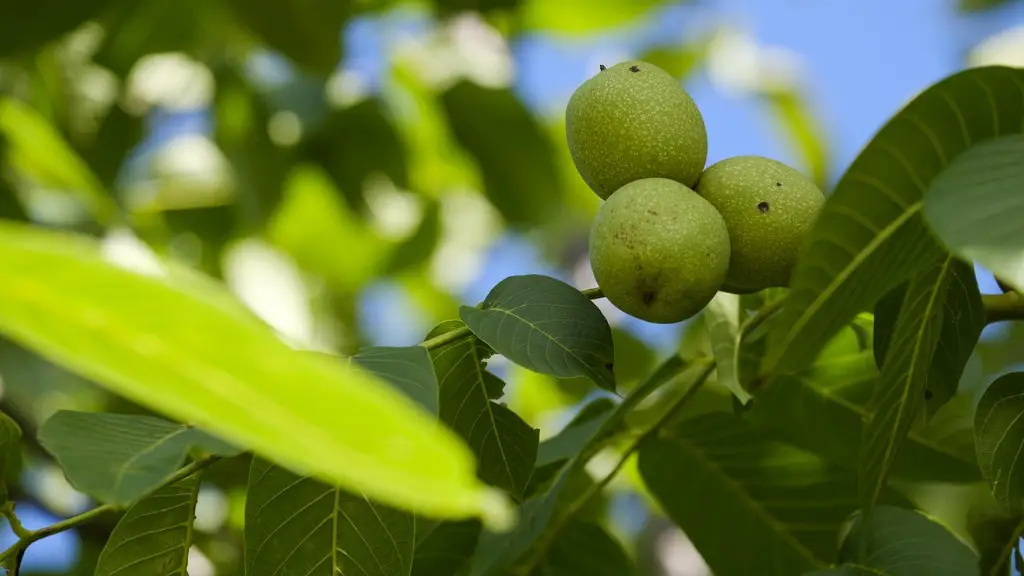Contrary to popular belief, transplanting an old lemon tree is not impossible. While the process may be difficult, success can be achieved if the tree is healthy and properly transplanted. It is important to remember that a lemon tree needs consistent water and well-drained soil, as well as protection from extreme temperatures. The following is an overview of the process of transplanting an old lemon tree.
Before transplanting, it is important to prepare the new planting site. In terms of soil, the area should be well-drained and full of organic matter. In terms of water, the chosen area should be consistently moist and watered when necessary. If the tree is located in an area exposed to high temperatures, providing some shade can help it adjust to the new environment. It is also essential to dig the new planting hole deep enough to cover the entire root ball.
Once the new planting site has been selected, the next step is to cut the branches of the lemon tree to balance the root-to-shoot ratio. Doing this helps the tree adjust to the new environment and prevents it from becoming root-bound. After the tree is pruned, the root ball should be soaked in a bucket with solution of water and root hormone for about 30 minutes to ensure that the roots are properly hydrated.
After the tree is pruned and hydrated, the next step is to transplant it. Carefully lift the root ball, ensuring that the tree is not jarred too much, and place it in the hole. Make sure to fill in the hole with the same type of soil that was removed. Also, water the tree generously after it has been planted and sprinkle organic material on top of the soil. This helps to maintain the moisture in the soil.
Finally, after the tree has been transplanted, it is important to continue to water it regularly and provide adequate protection from severe weather conditions. Monitoring the tree’s progress is important to ensure that it is growing properly. However, if it is not progressing as expected, it may be necessary to apply fertilizer or pesticides to boost its growth.
Purchasing a New Tree and Planting in Its Place
If an old lemon tree cannot be transplanted, the best option is to purchase a new tree and transplant it in its place. When buying a new tree, look for a young and healthy one, preferably from a reputable nursery. Prior to planting, determine the type of tree that is best suited for the climate and soil conditions. When preparing the soil, make sure it has adequate drainage and is properly fertilized. Once the soil has been prepared, dig a hole that is at least three feet deep to accommodate the new tree.
When transplanting the young lemon tree, it is important to pay close attention to detail to ensure that the roots are not damaged. While the tree is being lifted, keep the root ball intact and handle it gently. Place it in the hole and fill in the space between the root ball and the soil with organic material.
Water the newly planted tree generously, especially during the first week, to ensure that the roots are properly hydrated. If the tree is planted in an area exposed to extreme temperatures, it is also important to provide adequate shade to protect it from the elements. Additionally, it is helpful to mulch the area around the tree to provide additional insulation and help the soil retain moisture.
Monitoring the tree’s progress is also critical to make sure it is growing properly and to identify any problems that may arise. If the tree does not seem to be growing well, it may be necessary to apply fertilizer or pest control products in order to stimulate its growth.
What to Do with the Old Tree
If an old lemon tree cannot be transplanted, it is best to remove it from the area. Depending on the health of the tree, it may be possible to donate it to a local nursery or arboretum for further study. If the tree is beyond repair, it is still possible to use its dead wood for crafting or another purpose. Additionally, the roots of the old tree can be composted or used as mulch around other plants.
Before planting a new tree, it is important to make sure that the roots of the old tree have been completely removed. If they are still in the soil, they may affect the growth of the new tree by competing for nutrients and water. To ensure that the roots have been removed, it is best to till the soil to a depth of at least two feet. This helps to loosen the soil and dislodge the roots so they can be easily removed.
It is also important to consider the soil health of the area. If the soil has poor drainage or is overly saturated with salts, it may not be suitable for a new tree. If this is the case, it is best to improve the soil condition prior to planting a new tree. Adding organic materials and mulch helps to improve drainage, as well as increase the nutrient content of the soil.
When planting a new tree, it is essential to follow the directions for the specific species of lemon tree and take the necessary steps to ensure its healthy growth. Providing the tree with the necessary amount of water, compost, and fertilizer is important to ensure that the roots are properly established and the tree is growing properly.
Maintenance Tips for a Lemon Tree
When caring for a lemon tree, it is important to provide it with the right amount of water and sunlight. The tree should be watered regularly and deeply, but the soil should not be allowed to become waterlogged. A good rule of thumb is to allow the top inch of soil to dry out before watering. Additionally, a lemon tree should be placed in a spot that receives at least seven hours of direct sunlight per day.
It is also necessary to fertilize a lemon tree regularly to keep it healthy and productive. Fertilizers should be applied in early spring and again in late summer or early autumn. Organic fertilizers are preferable, as they provide a slow-release of nutrients and will not burn the tree’s roots or leaves.
In terms of pruning, it is important to keep the tree in shape and to allow for proper air circulation. Regular pruning also helps to keep the tree productive by encouraging new growth and flower production. Pruning can be done in late winter or early spring, after the tree has flowered.
Finally, it is essential to inspect the tree regularly for pest infestations. If there are signs of infestation, it is best to take action quickly to prevent the spread of the pests to other nearby trees. Additionally, making sure the tree is well-drained and mulched can help to prevent pests from taking over the tree.
Preventing Transplant Shock
It is important to remember that a newly transplanted lemon tree may suffer from transplant shock, which can slow its growth or even cause it to die if not addressed. To prevent transplant shock, the tree should be carefully watered and not over-watered. Additionally, if the tree is exposed to extreme temperatures, providing some form of shade can help it adjust to its new environment. Finally, making sure the soil is properly fertilized and mulched can help the tree adjust to its new home.
When transplanting a lemon tree, it is important to handle it carefully, as sudden movements can cause the roots to become damaged. Additionally, it is best to provide the tree with sufficient amounts of water until the roots are properly hydrated and the soil has settled around the root ball. If the soil has not settled on its own, it is best to tamp down the soil to make sure the roots are securely in place.
Once the tree has been transplanted, it is important to inspect it regularly to check for signs of disease or infestation. If any problems are detected, it is best to address them quickly to prevent the spread of the problem to other plants in the area. Finally, it is essential to monitor the tree’s growth and adjust the amount of water and fertilizer as needed.



